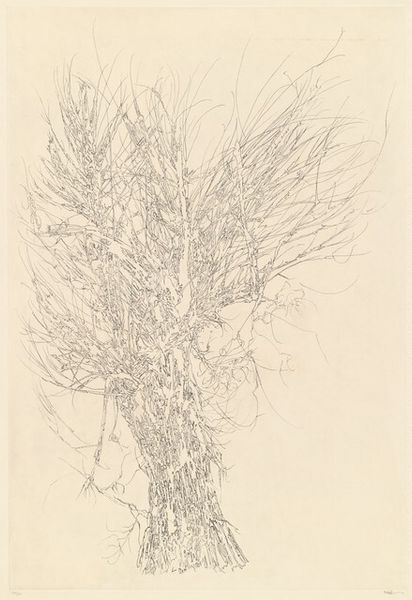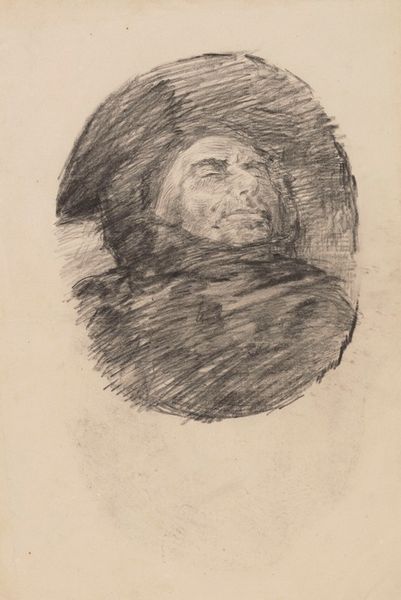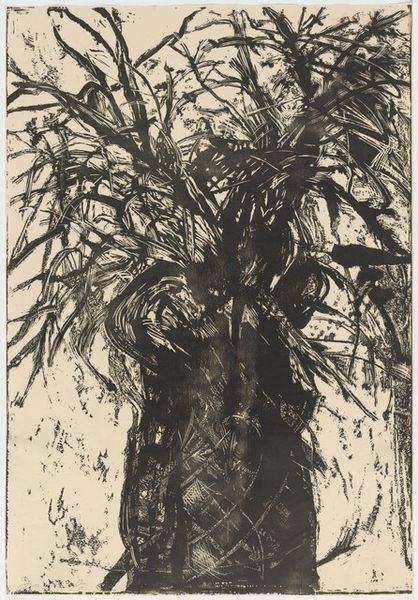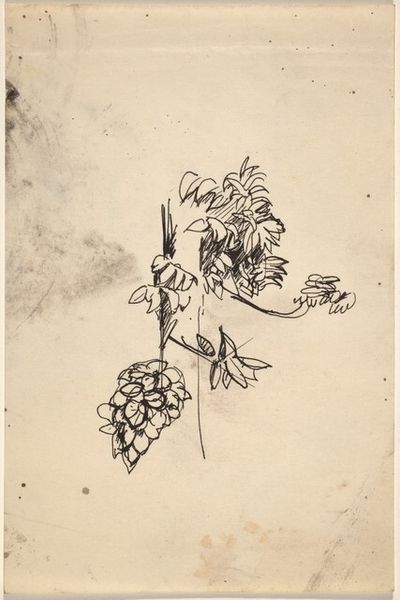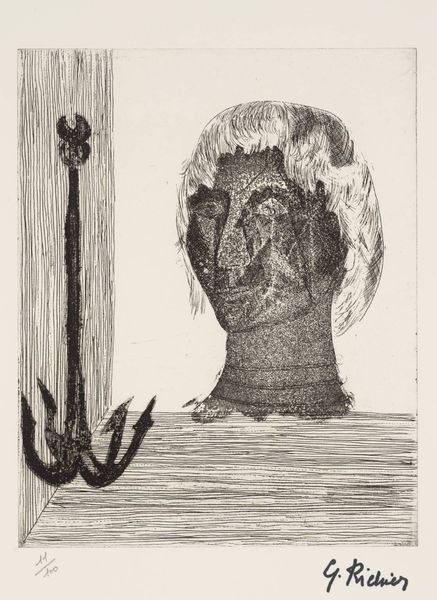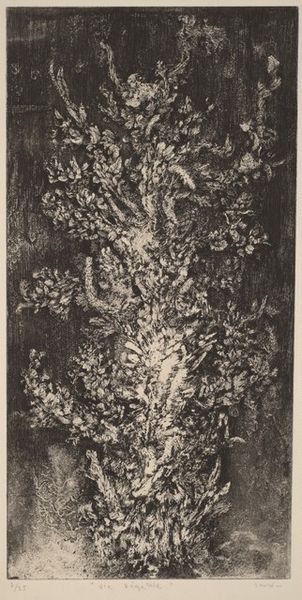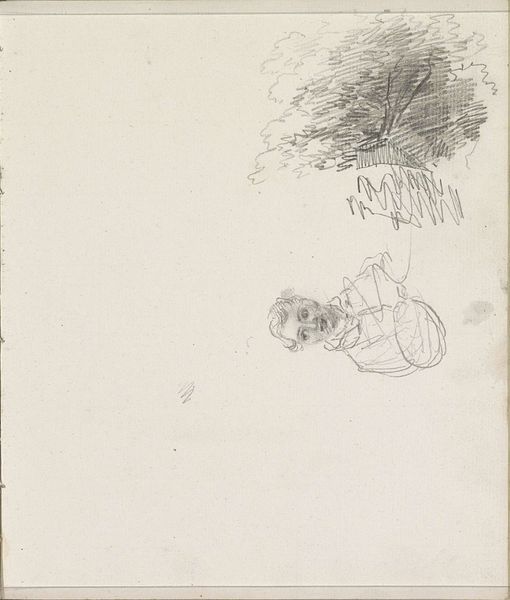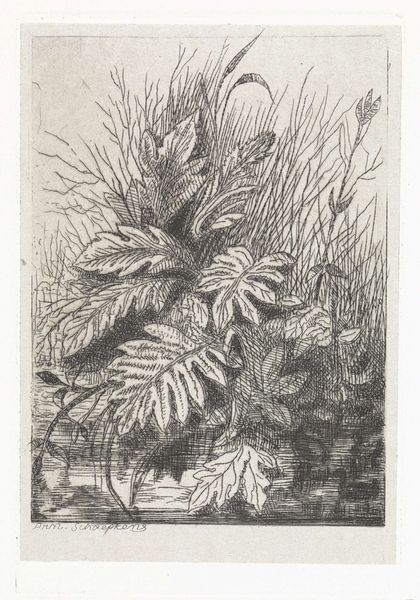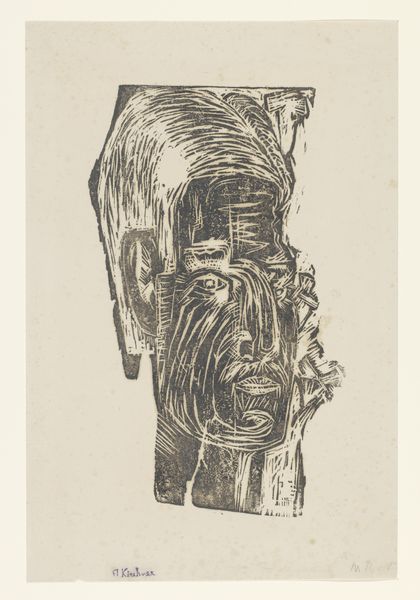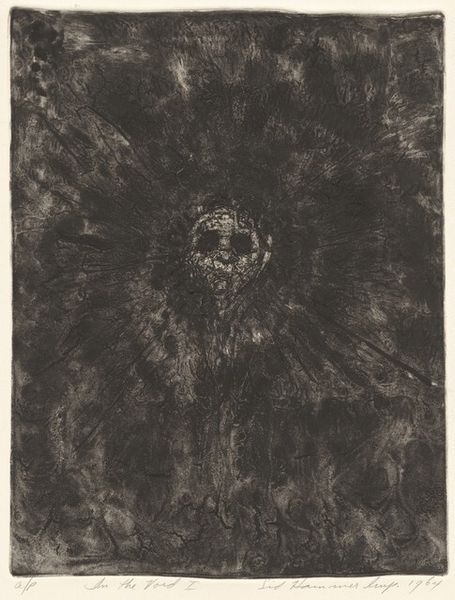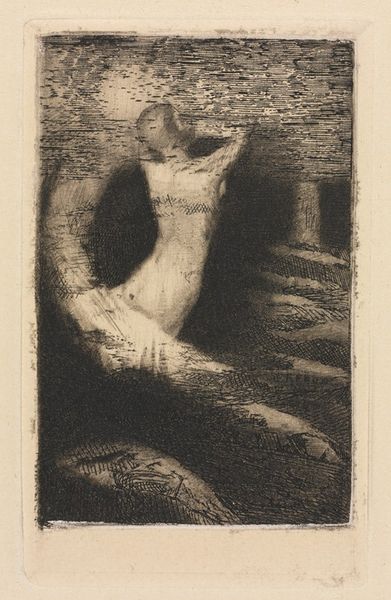
drawing, print, etching, ink
#
portrait
#
drawing
# print
#
etching
#
incomplete sketchy
#
figuration
#
ink
#
watercolor
Copyright: National Gallery of Art: CC0 1.0
Editor: We're looking at Jerome Kaplan's "Ceremony" from 1960. It's an etching, a print with some watercolor. It's a haunting image... kind of unsettling but intriguing. What strikes you about this piece? Curator: What immediately catches my eye is the title itself, "Ceremony." The image feels deeply ritualistic, but the distorted figure resists specific cultural ties. Etchings like this gained traction post-war, reflecting societal anxieties. It seems to channel a feeling of disorientation... what do you make of the figure’s obscured face? Editor: It's disturbing, definitely. It reminds me of how sometimes rituals become hollow, losing their original meaning. Almost like a performance of something once sacred. Curator: Precisely! The sketchy lines contribute to a sense of incompleteness, reflecting a break from tradition. Consider also the institutions supporting artists like Kaplan – were galleries showcasing these anxieties, capitalizing on a particular mood? Do you think that has had an influence? Editor: That’s interesting. Maybe they were, consciously or not. It’s almost as if the gallery *itself* became part of the ceremony, framing this unsettling view of the world for public consumption. Curator: Exactly! Art becomes a commodity within a system. How does this awareness shift your perception of the artwork? Editor: It makes me question the artist's intent even more. Was Kaplan critiquing this societal anxiety, or was he complicit in it? Or even further was it a true cry for help of sorts? I guess there are multiple ways to interperate this. Curator: Indeed, the strength lies in its ambiguity. The 'Ceremony' encapsulates how art can simultaneously reflect and be shaped by societal and market pressures. This was insightful to think over together!
Comments
No comments
Be the first to comment and join the conversation on the ultimate creative platform.

